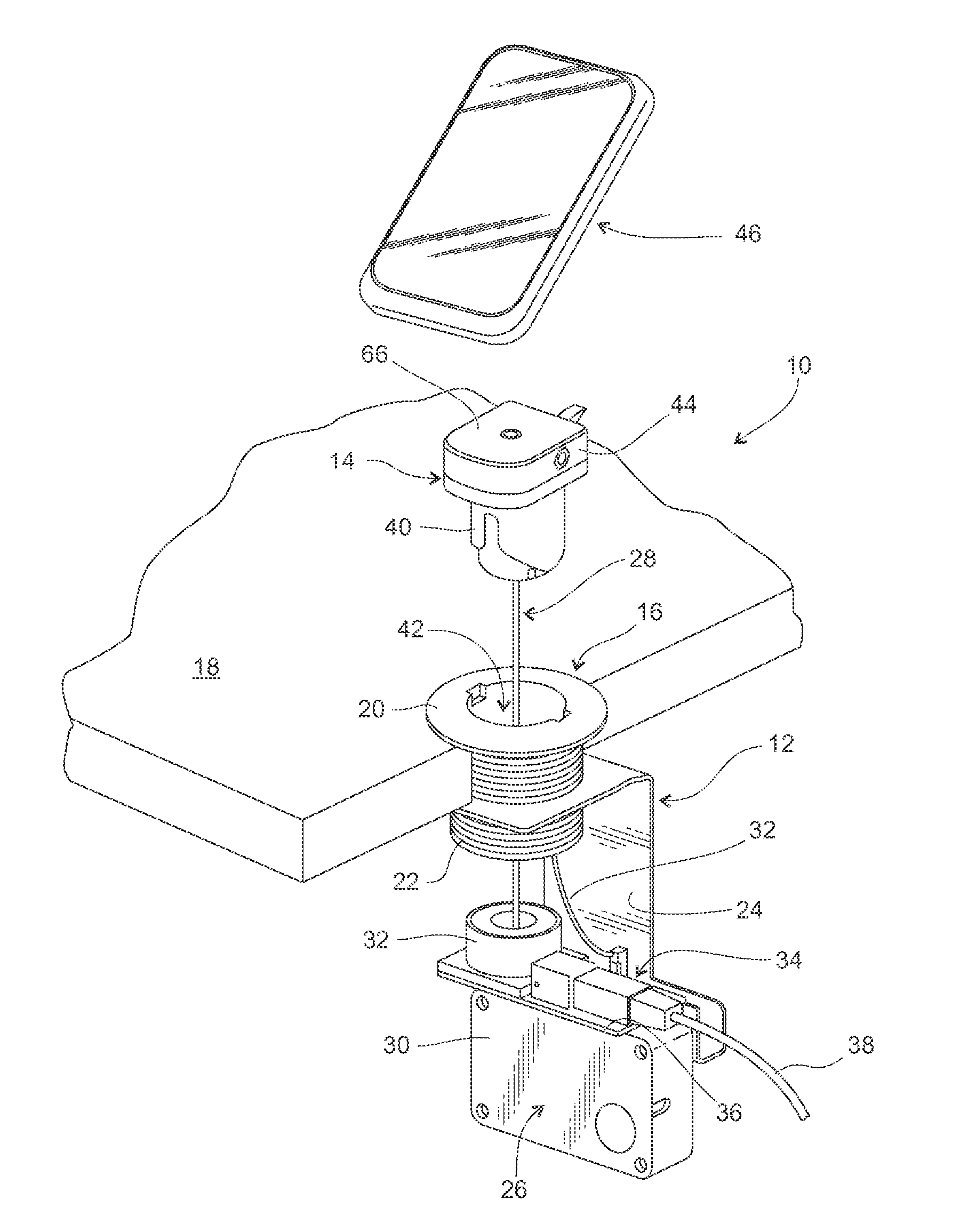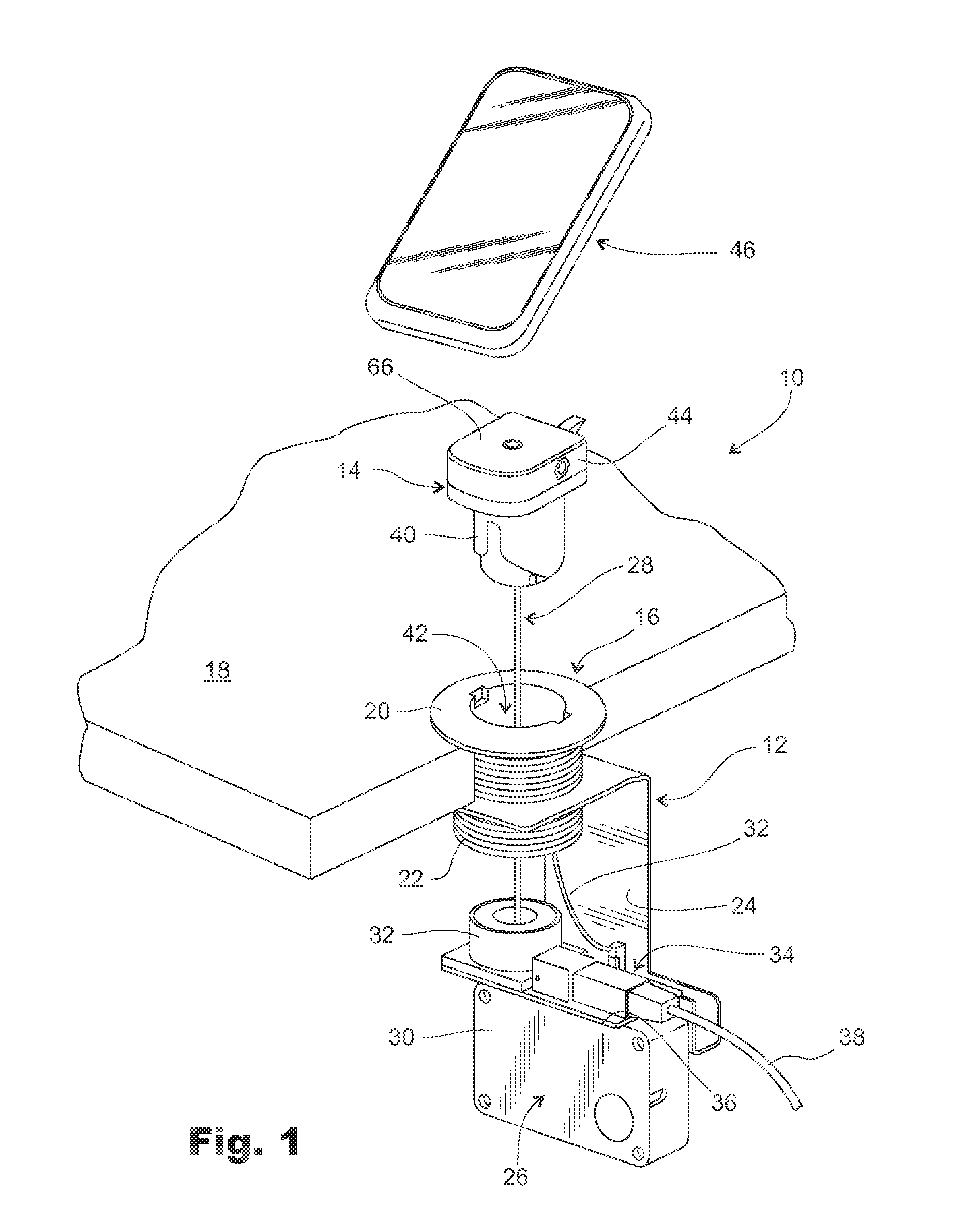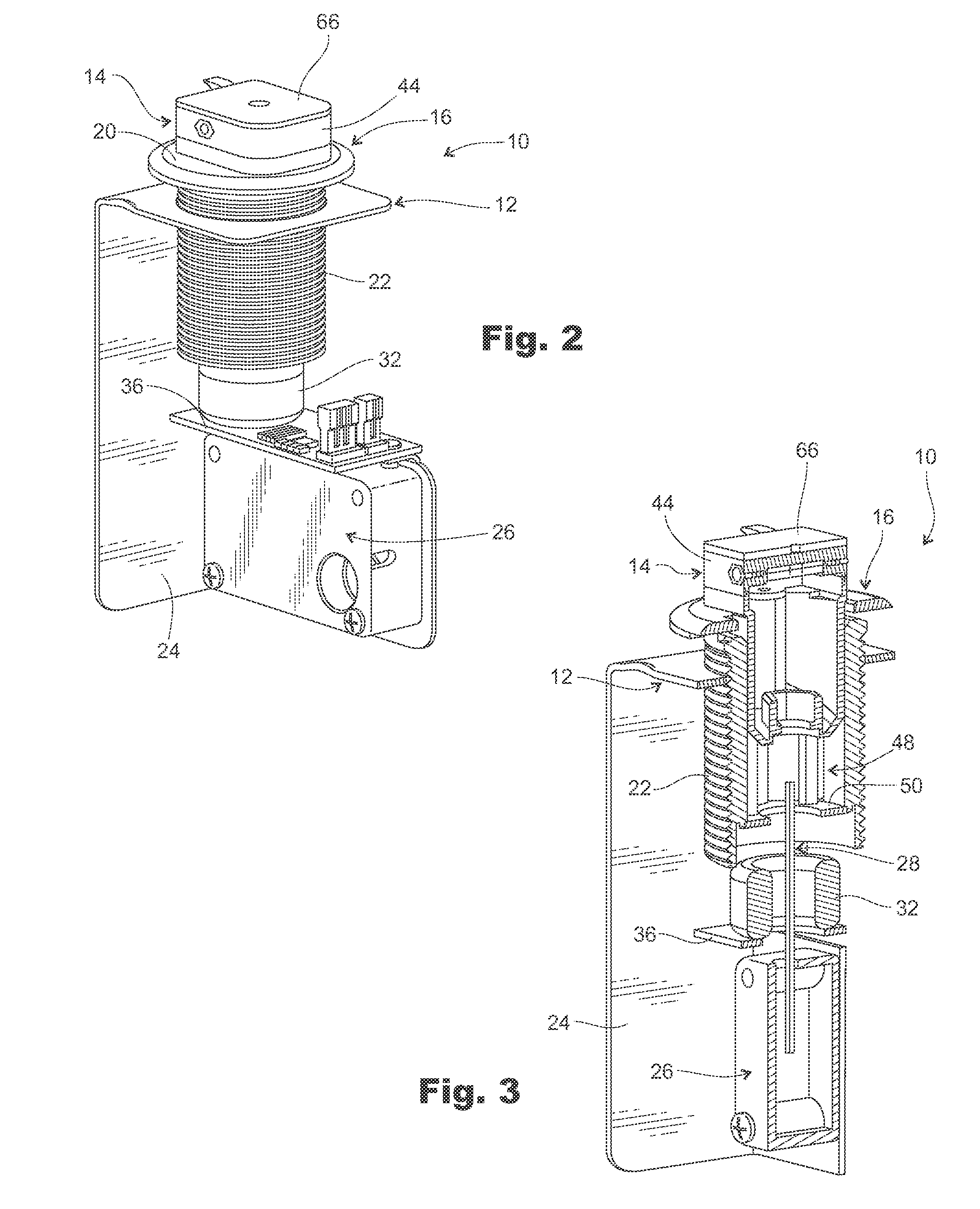Display for hand-held electronics
a handheld electronics and display technology, applied in the field of displays, can solve the problems of power cable management problems of the average salesperson, complex situation in a retail store, and cable tangling, and achieve the effect of eliminating much or all of the cabling used
- Summary
- Abstract
- Description
- Claims
- Application Information
AI Technical Summary
Benefits of technology
Problems solved by technology
Method used
Image
Examples
Embodiment Construction
[0099]In the drawings, and referring first to FIG. 1, shown generally at 10 is an improved display post assembly constructed in accordance with the various design improvements described and claimed here. The post assembly 10 includes a base assembly portion (indicated generally at 12) and a puck assembly portion (indicated generally at 14).
[0100]First, beginning with base assembly 12, the display post 10 includes a base assembly portion or fitting 16 that is mounted to a display countertop surface 18. The base portion 16 has an annular flange 20 that rests on top of surface 18. Extending downwardly from the annular flange 20 is a threaded portion 22 that carries a bracket 24. The bracket 24 further carries a mechanical retractor (indicated generally at 26).
[0101]The mechanical retractor 26 is conventional in design and includes a spring-loaded steel cable (indicated generally at 28), the length of which is drawn from and returned to the retractor housing 30 as the puck assembly 14 i...
PUM
 Login to View More
Login to View More Abstract
Description
Claims
Application Information
 Login to View More
Login to View More - R&D
- Intellectual Property
- Life Sciences
- Materials
- Tech Scout
- Unparalleled Data Quality
- Higher Quality Content
- 60% Fewer Hallucinations
Browse by: Latest US Patents, China's latest patents, Technical Efficacy Thesaurus, Application Domain, Technology Topic, Popular Technical Reports.
© 2025 PatSnap. All rights reserved.Legal|Privacy policy|Modern Slavery Act Transparency Statement|Sitemap|About US| Contact US: help@patsnap.com



